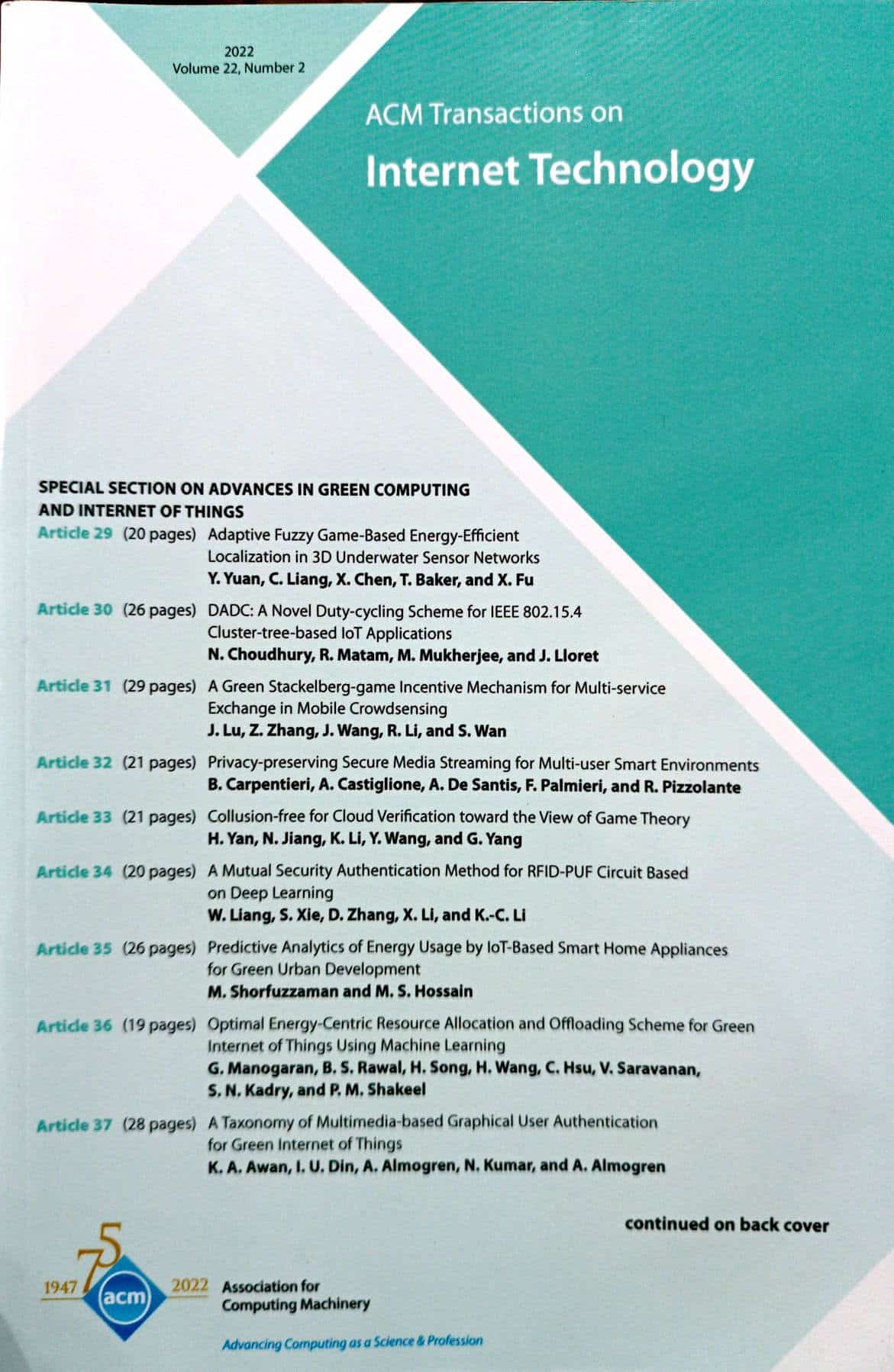“物联网中的多智能体系统和服务”特刊简介
IF 4.1
3区 计算机科学
Q2 COMPUTER SCIENCE, INFORMATION SYSTEMS
引用次数: 0
摘要
在过去的二十年里,物联网(IoT)已经从围绕自定义协议栈构建的竖井发展成为围绕标准构建的系统系统,IETF和W3C最近对物联网(WoT)的标准化进一步促进了物联网中应用层的互操作性。受限的Web服务器现在的目标设备只有10 KiB的RAM和100 KiB的ROM,这意味着传感器和执行器可以抽象到嵌入式Web服务后面。更进一步,WoT旨在通过Web提供对物联网设备的统一访问——将用于访问设备的协议和接口隐藏在抽象交互模式和超媒体控件后面。从网络边缘到云,网络现在正在成为一种统一的超媒体结构,将物联网设备和数字服务互连起来。尽管如此,许多研究问题仍然悬而未决。物联网系统不仅固有地复杂和异构,而且随着设备(及其服务)的可用性不断变化,它也是高度动态的。此外,物联网本质上是去中心化的,因为它不受单个实体的控制。在这种情况下,传统的工程模式变得不切实际。因此,物联网社区的研究人员和从业者需要建立复杂的软件代理,通过与系统中其他实体的灵活交互来实现其设计目标。物联网社区现在面临的许多潜在研究问题,如如何平衡软件代理中的目标导向和反应行为,或如何设计和管理去中心化物联网中的交互,都已在多代理系统的科学文献中进行了研究。与此同时,物联网为多智能体系统解锁了新的实际用例。本文章由计算机程序翻译,如有差异,请以英文原文为准。
Introduction to the Special Issue on Multiagent Systems and Services in the Internet of Things
Over the past two decades, the Internet of Things (IoT) has evolved from silos built around custom protocol stacks into a system of systems built around standards—and the recent standardization of the Web of Things (WoT) at the IETF and the W3C further facilitates application-layer interoperability in the IoT. Constrained Web servers now target devices with as little as 10 KiB of RAM and 100 KiB of ROM, which means sensors and actuators can be abstracted behind embedded Web services. Going further, the WoT aims to provide uniform access to IoT devices through the Web—by hiding the protocols and interfaces used to access the devices behind abstract interaction patterns and hypermedia controls. From the edge of the network to the cloud, the Web is now emerging as a uniform hypermedia fabric that interconnects IoT devices and digital services. Still, many research questions remain open. IoT systems are not only inherently complex and heterogeneous, but also highly dynamic as the availability of devices (and their services) changes continually. Moreover, the IoT is inherently decentralized because it is not under the control of a single entity. In such settings, traditional engineering paradigms become impractical. Researchers and practitioners in the IoT community therefore require means to build sophisticated software agents that can achieve their design objectives through flexible interaction with other entities in their system. Many of the underlying research questions the IoT community is now confronted with—such as how to balance goal-directed and reactive behavior in software agents, or how to design and govern interactions in a decentralized IoT—have been investigated in the scientific literature on multiagent systems. At the same time, the IoT unlocks new practical use cases for multiagent systems.
求助全文
通过发布文献求助,成功后即可免费获取论文全文。
去求助
来源期刊

ACM Transactions on Internet Technology
工程技术-计算机:软件工程
CiteScore
10.30
自引率
1.90%
发文量
137
审稿时长
>12 weeks
期刊介绍:
ACM Transactions on Internet Technology (TOIT) brings together many computing disciplines including computer software engineering, computer programming languages, middleware, database management, security, knowledge discovery and data mining, networking and distributed systems, communications, performance and scalability etc. TOIT will cover the results and roles of the individual disciplines and the relationshipsamong them.
 求助内容:
求助内容: 应助结果提醒方式:
应助结果提醒方式:


